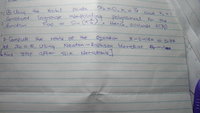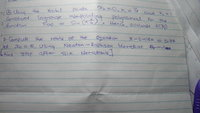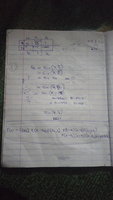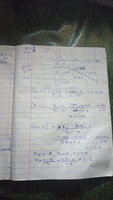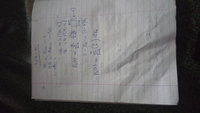I have been battling with these exercise please help
1.using the nodal points x0=0,x1=1/3 and x2=1 construct lagrange interpolation polynomial for the function f(x) =sin(π x/2). Hence evaluate f(3/4).
And
2.compute the roots of the equations x-sin18x=0.75 at x0=5 using Newton Raphson iterative formulae. Hint stop after six iterations.
1.using the nodal points x0=0,x1=1/3 and x2=1 construct lagrange interpolation polynomial for the function f(x) =sin(π x/2). Hence evaluate f(3/4).
And
2.compute the roots of the equations x-sin18x=0.75 at x0=5 using Newton Raphson iterative formulae. Hint stop after six iterations.

